| Description |
Taranabant is a highly potent and selective cannabinoid 1 (CB1) receptor inverse agonist that inhibits the binding and functional activity of various agonists, with a binding Ki of 0.13 nM for the human CB1R in vitro.
|
| Related Catalog |
|
| Target |
IC50: 0.3 nM (hCB1R), 0.4 nM (rCB1R)[1] Ki: 0.13 nM (hCB1R), 0.27 nM (rCB1R)[1]
|
| In Vitro |
Taranabant (MK-0364) binds to human or rat CB1R with an IC50 of 0.3 and 0.4 nM, respectively, corresponding to a Ki value of 0.13 and 0.27 nM, respectively. Taranabant binds to the human or rat CB2R with an IC50 value of 290 and 470 nM, respectively, corresponding to a Ki value of 170 and 310 nM, respectively. The selectivity ratio of CB1R over CB2R is approximately 1000-fold[1]. Taranabant (MK-0364) is a novel, acyclic cannabinoid-1 receptor inverse agonist for the treatment of obesity. IC50s of Taranabant for CB1R and CB2R by substituted amides is 0.3±0.1 nM, and 290±60 nM, respectively. Taranabant is a CB1R inverse agonist with minimal potential for covalent protein binding. Taranabant is an exceptionally potent and selective (900-fold over CB2) CB1R inverse agonist with >500-fold improvement in affinity over the original lead. In a functional assay of cyclic-AMP production, Taranabant is determined to be an inverse agonist (EC50=2.4±1.4 nM)[2].
|
| In Vivo |
Taranabant (MK-0364) dose-dependently inhibits 2 h and overnight food intake as well as overnight gains in body weight in C57BL/6N mice. At the 1- and 3-mg/kg doses (p.o.), Taranabant significantly inhibits 2-h food intake (36 and 69% reductions, respectively; P<0.05 and P<0.00001, respectively) and overnight food intake (13 and 40% reductions, respectively; P<0.05 and P<0.00001, respectively) as well as overnight gains in body weight (48 and 165% reductions, respectively; P<0.01 and P<0.00001, respectively). Taranabant dose-dependently inhibits food intake and weight gain, with an acute minimum effective dose of 1 mg/kg in diet-induced obese (DIO) rats[1]. Taranabant (MK-0364) has a good pharmacokinetic profile in three species (rat, 1 mg/kg iv, 2 mg/kg po, F=74%, t1/2=2.7 h; dog, 0.2 mg/kg iv, 0.4 mg/kg po, F=31%; t1/2=14 h; rhesus monkey, 0.2 mg/kg iv, 0.4 mg/kg po, F=31%, t1/2=3.6 h) and good brain exposure (1 mg/kg iv, brain and plasma concentrations of 0.11 and 0.18 μM at 1 h, respectively)[2].
|
| Kinase Assay |
The binding assay is performed by incubating various concentrations of Taranabant (MK-0364) with 0.5 nM [3H]CP 55,940, 1.5 μg of recombinant human CB1R-CHO membranes (or 0.1 μg of human CB2R-CHO membranes) in 50 mM Tris-HCl, pH 7.4, 5 mM MgCl2, 2.5 mM EDTA, 0.5 mg/mL fatty acid-free bovine serum albumin (BSA), 1× proteinase inhibitor mix, and 1% DMSO. After 1-h incubation at 37°C, the reaction is stopped by filtration, and bound radioligand is separated from free radioligand by washing the filter plate. Total specifically bound radiolabel is approximately 10% of the total added radiolabel. Inhibitory IC50 values are calculated through nonlinear curve fitting, from which Ki values are then calculated. The CB1R density (Bmax=5 pmol/mg based on [3H]CP 55,940 binding) in the recombinant human CB1R-CHO membranes is close to that from rat brain membranes (3-5 pmol/mg)[1].
|
| Animal Admin |
Mice[1] Male C57BL/6N wild-type mice are used. MK-0364 is dissolved or dispersed (with sonication) as a fine homogeneous suspension in 0.225% methylcellulose/10% Tween 80 in water for subsequent oral dosing of mice. All mice are weighed, and vehicle (0.225% methylcellulose/10% Tween 80 in water) or Taranabant (1 or 3 mg/kg) is administered by oral gavage to male mice approximately 30 min before the onset of the dark phase of the light cycle (n=12 per group, age 23 weeks, mean body weight 34.14±0.53 g). Mice are fed ad libitum in the dark phase after dosing. A preweighed aliquot of a highly palatable medium-high fat diet (25% kcal from sucrose, 32% kcal from fat, 4.41 kcal/g) is provided in the food hopper of the cage 5 min before the onset of the dark phase of the light cycle and weighed 2 and 18 h after the onset of the dark phase of the light cycle. In addition, all mice are weighed 18 h after the onset of the dark phase of the light cycle. The study is of crossover design, i.e., vehicle and 1-mk/kg groups are dosed first. After a 4-day washout, the previous vehicle group is dosed with 3 mg/kg Taranabant, and the previous 1-mg/kg group is dosed with vehicle. Rats[1] For acute experiments, male Sprague-Dawley DIO rats are randomized into groups (n=6 rats/group) for compound and vehicle dosing. Rats are weighed 17 h after dosing to determine effects on overnight body weight gain. Taranabant is administered orally to DIO rats 1 h before the start of the dark cycle (3:00 PM) at 0.3, 1, and 3 mg/kg p.o. Vehicle is 10% Tween 80 in water, and dosing volume is 2 mL/kg. Powdered food is provided in food cups that are weighed continuously at 5-min intervals over 18 h, and the data are recorded using a computerized system.
|
| References |
[1]. Fong TM, et al. Antiobesity Efficacy of a Novel Cannabinoid-1 Receptor Inverse Agonist, N-[(1S,2S)-3-(4-Chlorophenyl)-2-(3-cyanophenyl)-1-methylpropyl]-2-methyl-2-{[5-(trifluoromethyl)pyridin-2-yl]oxy}propanamide (MK-0364), in Rodents. J Pharmacol Exp T [2]. Lin LS, et al. Discovery of N-[(1S,2S)-3-(4-Chlorophenyl)-2- (3-cyanophenyl)-1-methylpropyl]-2-methyl-2- {[5-(trifluoromethyl)pyridin-2-yl]oxy}propanamide (MK-0364), a novel, acyclic cannabinoid-1 receptor inverse agonist for the treatment of obesity. J M
|

![N-[(1Z)-3-(4-chlorophenyl)-2-(3-cyanophenyl)-1-methylprop-1-en-1-yl]-2-methyl-2-{[5-(trifluoromethyl)pyridin-2-yl]oxy}propanamide Structure](https://image.chemsrc.com/caspic/245/876365-70-7.png) CAS#:876365-70-7
CAS#:876365-70-7![3-{(1S,2S)-1-(4-chlorobenzyl)-2-[(2-methyl-2-{[5-(trifluoromethyl)pyridin-2-yl]oxy}propanoyl)amino]propyl}benzamide Structure](https://image.chemsrc.com/caspic/169/876365-72-9.png) CAS#:876365-72-9
CAS#:876365-72-9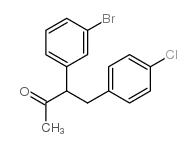 CAS#:848310-98-5
CAS#:848310-98-5 CAS#:622-95-7
CAS#:622-95-7 CAS#:150529-73-0
CAS#:150529-73-0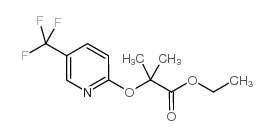 CAS#:913849-17-9
CAS#:913849-17-9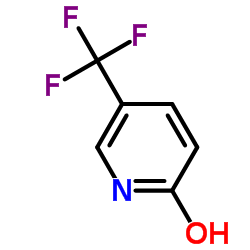 CAS#:33252-63-0
CAS#:33252-63-0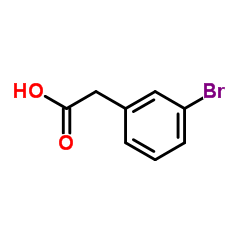 CAS#:1878-67-7
CAS#:1878-67-7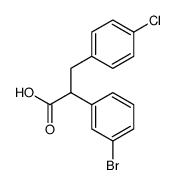 CAS#:941280-51-9
CAS#:941280-51-9